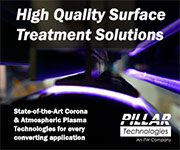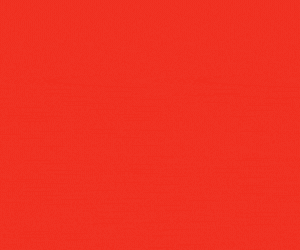E.C. Shaw Installs nyloflex NExT FV Exposure
- Published: December 12, 2013
CHARLOTTE, NC | E.C. Shaw Co. recently installed a nyloflex NExT FV exposure from Flint Group Flexographic Products. The nyloflex NExT exposure technology utilizes a high intensity UV-A-LED light source to conduct rapid crosslinking of the photopolymer surface before oxygen inhibition can occur, resulting in a flat top dot structure on the printing plate and a virtual 1:1 image reproduction from the digital file to the finished plate.
This technology is unique in that it does not require any additional consumable items or steps, so it can easily be incorporated into the existing digital workflow. The high level of UV emission leads to a significant improvement in the reproduction of the fine relief elements. When combined with high resolution surface screening, the resulting surface texture of the flat top dots provides an optimal surface to enhance ink laydown, ink density, and consistency in printing.

E.C. Shaw, a pre-press production house dedicated to providing its customers the latest in flexographic printing plates, saw the opportunity with the nyloflex NExT exposure to strengthen its customer base by offering a more consistent printing plate, which offers the printer cost savings through ink reduction and consolidation of print materials. Plates produced using this technology with surface screening allow the printer greater impression latitude to use softer cushion tapes to achieve both high density solids and fine process work. Therefore, the printer can consolidate its use of a range of cushion tapes and utilize the same tape for both process and line work; furthermore, additional combination plates can be run, utilizing fewer press stations and plates.
“Besides consolidation of press consumables, printers also point out the savings on ink consumption, which is twofold,” notes A.J. Grome, VP sales & marketing of E.C. Shaw. “Our customers found that they can either use a lower anilox volume with their same, standard base/varnish ratio, or they can further extend the ink with additional varnish, thereby stretching out the use of costly pigments,” explains Grome.
White ink is often used in packaging as a background to cover the transparency of the film package and hide the visibility of the contents. The ability of the plate to apply a smooth yet thin ink film but with high opacity is of particular importance when printing with white, due to the high cost of the white pigment, titanium dioxide. “The ability to obtain the same or greater white opacity with less ink and no pinholing saves the printer money, and we at E.C. Shaw are proud to implement a technology, which not only provides benefits to our internal prepress work flow, but also affords the printer cost savings, increased consistency and ease of use,” Grome further confirms.
In the prepress area, the nyloflex NExT exposure technology provides a more consistent plate due to the use of the UV-A LED light source, which is used to expose and crosslink the plate. The UV-A LED lights do not require warming up and the output is exceptionally stable over their long life (10,000+ hours)—much more so than conventional UV tubes with a 500 hour life span. Therefore, the exposure performed with the nyloflex NExT technology substantially enhances the production consistency from plate to plate. This benefit manifests itself in repeat orders of printing plates from satisfied customers.













